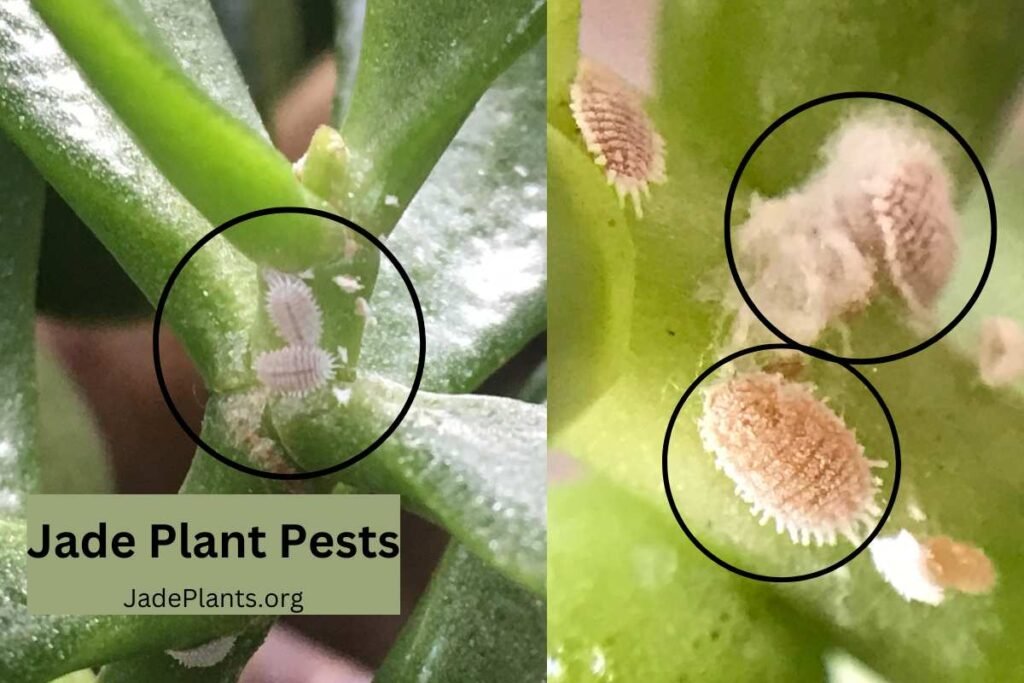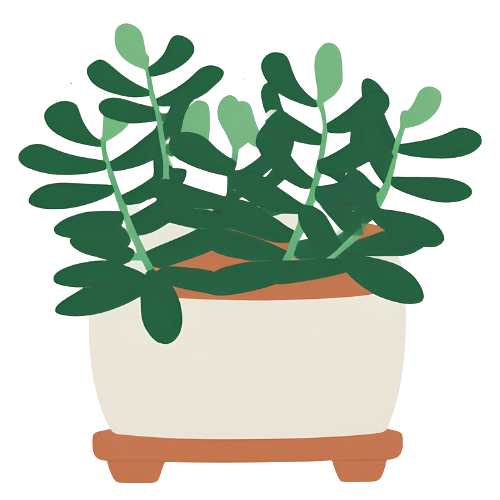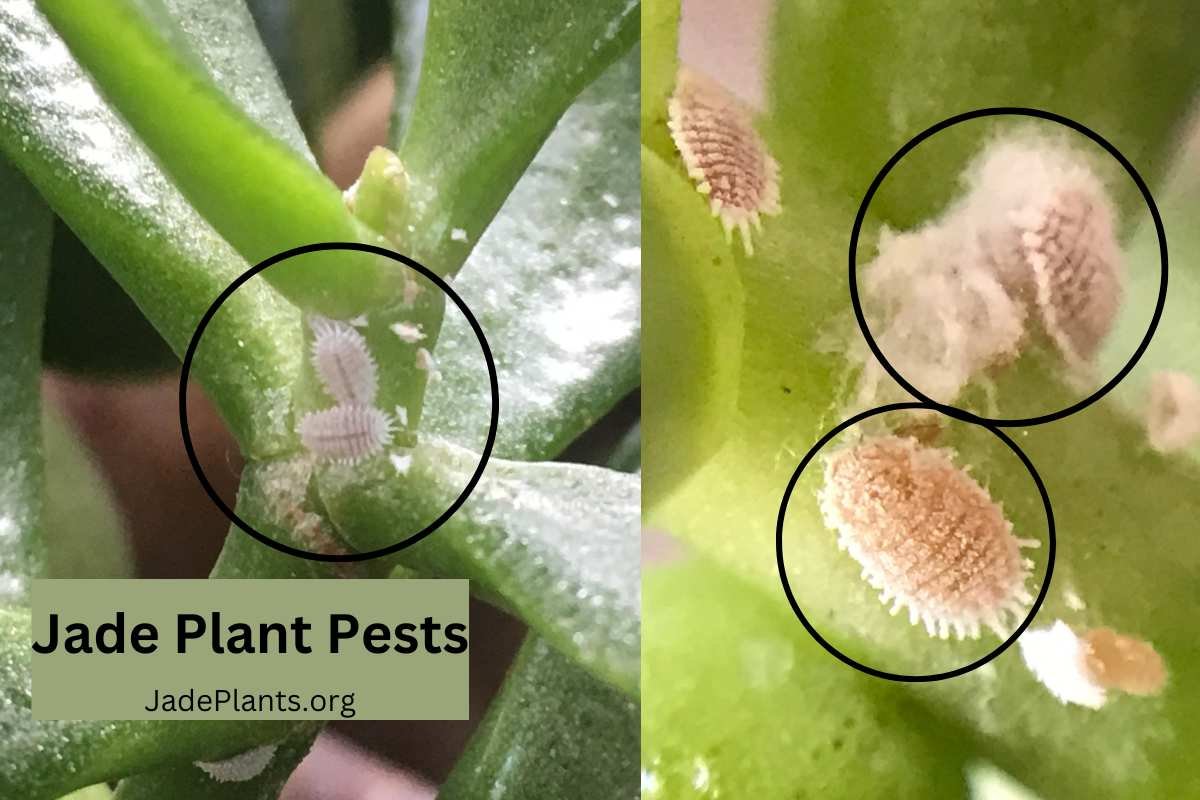Jade plants are like little green treasures. They bring life and beauty into our homes. These succulents are not just plants; they feel like family.
But like any living thing, they can face problems. Pests and diseases can attack them. If you love your jade plant, you need to know how to protect it.
This guide will help you understand what can harm your plant and how to keep it healthy. Let’s dive in.
Table of Contents
Why Jade Plants Are Special
Jade plants have thick, shiny leaves. They store water in those leaves, which makes them strong. But this also makes them a target for pests and diseases. Their juicy leaves are tempting for bugs. Plus, their soil can become a breeding ground for problems if not cared for properly. Knowing this helps us stay one step ahead.
Many people think jade plants are tough and don’t need much care. While they are hardy, they still need attention. Ignoring them can lead to trouble. So, let’s talk about the enemies of your jade plant: pests and diseases.
Common Pests That Attack Jade Plants

Spider Mites: Tiny but Troublesome
Spider mites are tiny bugs that can cause big problems. You might not see them at first. But if you notice small webs on your plant, it’s time to act. These pests suck the sap from the leaves. Over time, the leaves turn yellow and fall off.
To check for spider mites, hold a white sheet of paper under a leaf. Gently tap the leaf. If you see tiny dots moving, those are spider mites. Don’t panic. You can fight them.
First, wash your plant with water. Use a spray bottle to clean the leaves. Then, apply neem oil. Neem oil is safe and works well. It stops the mites from coming back. Keep an eye on your plant after treatment. Repeat the process if needed.
Mealybugs: Fuzzy Invaders
Mealybugs look like little cotton balls. They hide in the nooks of your jade plant. These bugs drink the sap too. They leave behind a sticky mess called honeydew. This sticky stuff attracts ants and can lead to mold.
If you spot mealybugs, act fast. Use a cotton swab dipped in rubbing alcohol. Gently dab the bugs. This kills them on contact. For bigger infestations, mix water and dish soap. Spray the solution on the plant. This method is simple and effective.
After treating your plant, inspect it often. Mealybugs can return. Stay vigilant. Your jade plant will thank you.
Scale Insects: Stubborn Pests
Scale insects are tricky. They look like small bumps on the stems or leaves. These pests don’t move much, so they’re easy to miss. But they’re harmful. They weaken the plant by sucking its sap.
To deal with scale insects, scrape them off with your fingernail. Be gentle to avoid damaging the plant. Next, use insecticidal soap. Spray it on the affected areas. This soap kills the insects without harming your plant.
Prevention is key. Check your jade plant regularly. Early detection makes treatment easier. A healthy plant is less likely to attract pests.
Diseases That Can Harm Your Jade Plant
Root Rot: The Silent Killer
Root rot is a common problem for jade plants. It happens when the roots sit in wet soil for too long. Jade plants don’t like soggy conditions. Their roots need air to breathe.
Signs of root rot include mushy stems and yellowing leaves. If you suspect root rot, take action right away. Remove the plant from its pot. Inspect the roots. Healthy roots are firm and white. Rotten roots are brown and soft.
Trim off the damaged roots with clean scissors. Repot the plant in fresh, well-draining soil. Make sure the pot has drainage holes. Water your jade plant only when the soil is dry. Prevention is better than cure.
Leaf Spot: Spotty Trouble
Leaf spot is a fungal disease. It shows up as dark spots on the leaves. These spots can grow and spread. Over time, the leaves may fall off.
To prevent leaf spot, avoid watering the leaves. Always water the soil instead. Keep your plant in a sunny spot. Good airflow helps too.
If your plant already has leaf spot, prune the affected leaves. Use sterilized scissors to avoid spreading the disease. Apply a fungicide if needed. Follow the instructions carefully.
Powdery Mildew: A Dusty Problem
Powdery mildew looks like white powder on the leaves. It’s another fungal issue. This disease thrives in humid conditions. Poor airflow makes it worse.
To treat powdery mildew, remove the infected leaves. Spray the plant with a mixture of water and baking soda. This homemade remedy works wonders. Keep the area around your plant clean. Good hygiene prevents future outbreaks.
How to Prevent Pests and Diseases
Proper Watering: The Key to Health
Overwatering is the number one mistake people make. Jade plants store water in their leaves. They don’t need frequent watering. Stick your finger into the soil. If it feels dry, it’s time to water.
Use a pot with drainage holes. This prevents water from pooling at the bottom. Standing water leads to root rot. Always empty the saucer under the pot after watering.
Good Airflow: Breathe Easy
Jade plants love fresh air. Place them in a spot with good airflow. Avoid cramped spaces. Stagnant air creates a perfect environment for pests and diseases.
If your plant is indoors, open a window nearby. A small fan can help too. Just don’t point it directly at the plant. Gentle airflow is enough.
Regular Cleaning: Stay Ahead
Dust can block sunlight and attract pests. Wipe your jade plant’s leaves with a damp cloth. Do this every few weeks. Clean plants are happy plants.
Check your plant often. Look for signs of trouble. Early detection saves time and effort. Prevention is always better than cure.
Natural Remedies for Pests and Diseases
Neem Oil: Nature’s Gift
Neem oil is a powerful tool. It repels pests and fights diseases. Mix it with water and spray it on your plant. Follow the instructions on the bottle. Neem oil is safe for your plant and the environment.
Garlic Spray: A Kitchen Solution
Garlic has natural antibacterial properties. Crush a few cloves and boil them in water. Let the mixture cool. Strain it and pour it into a spray bottle. Use it to treat fungal diseases. This remedy is cheap and effective.
Cinnamon Powder: Spice Up Your Plant Care
Cinnamon is more than a spice. It has antifungal properties. Sprinkle it on the soil to prevent mold. It’s safe and smells great. Your jade plant will love it.
When to Call a Professional
Sometimes, problems get out of hand. If your jade plant is severely damaged, seek help. A professional gardener or plant expert can diagnose the issue. They can recommend the best treatment.
Don’t wait too long. Early intervention increases the chances of saving your plant. Remember, prevention is always better than cure.
Frequently Asked Questions About Jade Plant Problems:
Why are my jade plant’s leaves falling off?
Leaf drop in jade plants usually happens for a few key reasons. The most common cause is overwatering. When roots sit in wet soil too long, they can’t take up water properly. This makes leaves get soft and fall off. Another reason might be too little water, which makes leaves dry up and drop. Check your soil by sticking your finger about an inch deep – if it feels wet, wait to water. If it’s completely dry, give your plant a good drink.
How often should I water my jade plant to prevent diseases?
The right watering schedule depends on many things – your home’s temperature, humidity, and the season. In general, let the top inch of soil dry out between waterings. During growing season (spring and summer), this might mean watering every 7-10 days. In winter, you might only water every 2-3 weeks. Always check the soil first. Remember, it’s better to underwater than overwater a jade plant.
What causes brown spots on jade plant leaves?
Brown spots can come from several things. If the spots are dry and crispy, your plant might be getting sunburned. Move it away from direct hot sun. If spots are soft and dark, you might have a fungal infection. This often happens when leaves get wet during watering. Try watering at the soil level instead of from above. Sometimes, brown spots show up after pest damage too. Check under leaves for any tiny bugs.
My jade plant’s stems are wrinkled – what’s wrong?
Wrinkled stems usually mean your plant needs water. Jade plants store water in their stems and leaves. When they’re thirsty, they use up these stores, making stems wrinkle. Give your plant a good drink, but make sure the pot has drainage holes. The stems should plump up in a few days. If they stay wrinkled after watering, check that roots are healthy and not rotted.
Can I save my jade plant if it has root rot?
Yes, you can often save a jade plant with root rot if you catch it early! First, take the plant out of its pot and gently wash all soil off the roots. Cut away any roots that are dark, soft, or mushy – healthy roots should be firm and light colored. Let the plant dry out for a day, then replant in fresh, dry succulent soil. Don’t water for about a week to let any cuts heal. After that, water very carefully and keep checking the roots’ health.
How do I know if my jade plant has mealybugs?
Mealybugs look like tiny bits of white cotton on your plant. They often hide where leaves meet stems or in new growth areas. You might also see sticky clear drops on leaves or stems – this is honeydew that mealybugs leave behind. If you see ants on your jade plant, they might be farming mealybugs for this honeydew. Check your plant carefully every week, looking in all the nooks and crannies.
Why are my jade plant’s leaves turning yellow?
Yellow leaves usually tell us the plant is stressed. The most common cause is overwatering – if soil stays wet too long, roots can’t work right and leaves turn yellow. Sometimes old leaves naturally yellow and fall off, but if many leaves turn yellow at once, check the soil moisture. Other causes might be too little light, pest problems, or not enough nutrients. Too much direct sun can also make leaves yellow before they burn.
How can I prevent pests on my jade plant?
Prevention is much easier than treatment! Keep your plant healthy with good air flow – use a small fan if needed. Check new plants carefully before bringing them near your other plants. Wipe leaves with a damp cloth every month to remove dust and check for early signs of problems. Keep plants away from air vents and cold drafts. A regular spraying with diluted neem oil can help prevent many pest problems.
What’s the white powder on my jade plant leaves?
If the powder easily wipes off and looks like flour, it’s probably powdery mildew. This fungus grows when air doesn’t move well around plants. If the white stuff looks more like tiny crystals and doesn’t wipe off, that’s normal – jade plants make a waxy coating to protect their leaves. For powdery mildew, improve air flow and try the milk spray I mentioned earlier. The natural leaf coating should be left alone – it helps protect your plant.
Can jade plants recover from freeze damage?
Yes, jade plants can often bounce back from mild freeze damage! If your plant got too cold, you’ll see dark, soft leaves and stems. Don’t cut anything off right away – wait to see what parts stay soft and what parts firm up again. After a few days, remove any parts that stayed soft or turned black. Keep the plant warm but not hot, and don’t water until you see signs of new growth. Be patient – recovery can take several weeks or even months.
Final Thoughts
Growing jade plants brings me joy. Yes, they can get pests or diseases. But now you know how to spot problems and fix them fast. With good care, your jade plant can grow strong and beautiful for many years.
Remember, every plant problem teaches us something new. Keep learning, keep watching, and keep caring for your plants. They’ll reward you with healthy growth and lovely green leaves.
Do you have questions about your jade plant? Ask them! I love helping other plant fans keep their jades happy and healthy.

